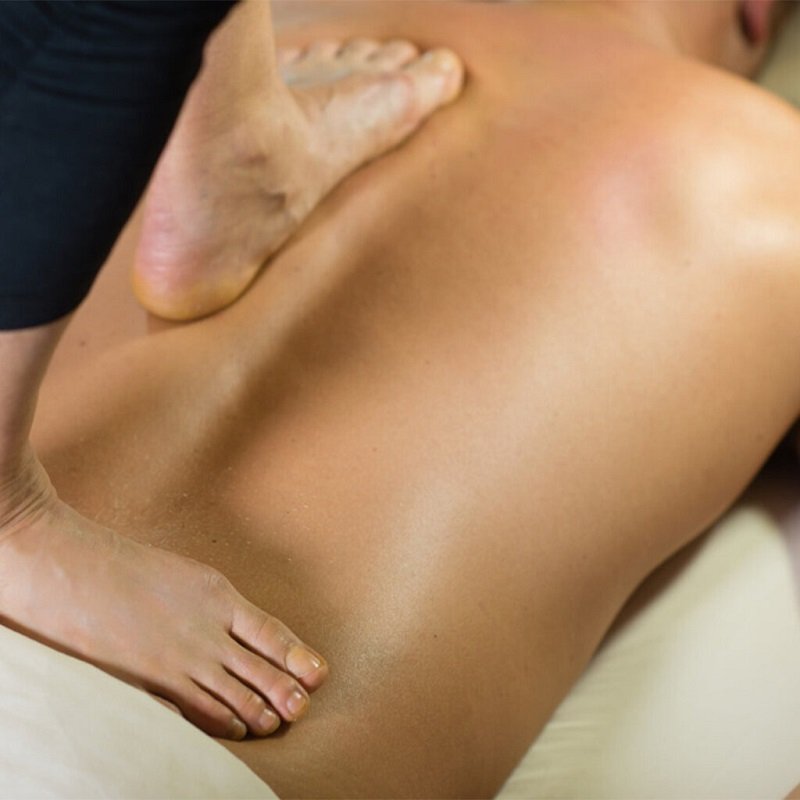Shiatsu is a Japanese method of treatment, it is the Japanese version of Chinese medicine, and the word in English means pressure of the fingers, but in the way the exercises do not use the fingers only, but touching, pressing and manipulating the body with movements, and a number of techniques to restore the muscles, bones, skeletal system and nerves to Its original location, after stimulating blood flow.
It is basically adjusting the shape of the body, to the original healthy position, and balancing the energy flows in the body, and the patient feels completely comfortable after the sessions, and the Shiatsu philosophy depends on the fact that the human body has channels for different energy, and these channels cannot be seen, but they affect the internal organs of the body. A person, when a person suffers from a certain pain or disease, he is originally suffering from a blockage of one of the sources of energy channels, and the blockage leads to pressure on the human organs, and thus the appearance of pain.
Scientific studies have shown that shiatsu massage has the same effect as acupuncture, except that it uses only the fingers, mostly the thumb, as an alternative to needles. These types are Zen Shiatsu, Macrobiotic Shiatsu, Healing Shiatsu, Namikoshi Shiatsu, Movement Shiatsu and Hara Shiatsu Each approach is named after its creator but basically points from the body system are used, called tsubo, tsubo is the highest point on the body and there are 361 points in the body , point in meridian lines, the therapist presses again and again on the points, in order to help the body to stimulate blood flow, so easily the body will absorb all the nutrients in foods, which facilitates recovery and pain management
Benefits of Japanese Shiatsu Massage
With the world’s tendency since the eighties of the last century to traditional folk medicine, represented by Chinese and Japanese medicine and prophetic medicine, the importance of shiatsu massage has emerged, the integration between the body and the psychological state of the individual from the benefits of massage:
– The ability to stimulate circulation, blood flow to the various channels to contribute to the healing of pain.
Helping to achieve psychological and nervous balance, eliminate stress and anxiety, and help sleep.
Effective in affecting the internal organs of the human body. Massage is used to treat the following diseases:
A number of scientific studies have proven the importance of shiatsu massage, as it is an effective treatment for cases of bronchial asthma, thinning and hair loss, involuntary urination, colitis, seasonal influenza, constipation, symptoms and disorders resulting from diabetes, diarrhea, headache, exhaustion, stress and fatigue. , insomnia and sleep disorders, dizziness and loss of consciousness, hemorrhoids, and treats sexual weakness, back pain, neck stiffness, vomiting and convulsions.
Shiatsu massage seems to be a very effective treatment for joint diseases and pains, but when following the shiatsu approach, it is necessary to follow a complete lifestyle that relies healthily on
Getting up early, going to bed early, regular movement and exercise, or walking daily for at least ten minutes, following a healthy diet, based on all nutrients such as protein, dietary fiber, amino acids, unsaturated fats, complex carbohydrates, and mineral salts, with plenty of water. Large, eight cups a day, while staying away from wrong practices such as smoking, consuming coffee and caffeine in large quantities, and staying away from saturated fats, fatty meats, and soft drinks.
Benefits for people with cancer
include
It makes them feel good and helps lift mood and improve health.
Helps control symptoms and side effects, such as: poor appetite, sleep problems, pain, and bad mood.
It helps them relax and deal with stress, depression and nausea.
They cope better with cancer.
Who can receive shiatsu treatment?
Categories that can use shiatsu therapy are:
People of all ages and all fitness levels.
Who is healthy or even weak in health.
What happens during a shiatsu treatment session?
There are steps that a shiatsu therapist takes during a session
The therapist begins by asking you some questions about your health, lifestyle, medical history, diet, and sleep pattern.
The therapist asks you to see a doctor to determine whether or not you can undergo shiatsu treatment.
The therapist will ask you to wear loose, comfortable clothing, but you will not have to undress.
The therapist begins by touching your abdominal area to see the energy levels in your body, and to identify areas that need attention.
The therapist continuously monitors the patient’s breathing; Because the awareness of his external breath helps to relax.
The treatment session lasts from an hour to an hour and a half, and the effect may be stimulating and invigorating or calming and analgesic, depending on the purpose of the session.
You may feel pain, headache, fatigue and muscle stiffness for 24-48 hours after the massage, but it shouldn’t last any longer.
Contraindications for the use of shiatsu therapy
There are some cases in which shiatsu therapy should not be used, including the following:
Burns, cuts or rashes.
Bone fractures.
areas of inflammation.
who underwent surgery recently.
Spinal problems, such as: herniated disc or ankylosing spondylitis.
Infectious diseases, such as chickenpox, influenza, and athlete’s foot.
Blood cancers, such as: leukemia.
Fever, varicose veins.
Read more on the Web of Medicine

